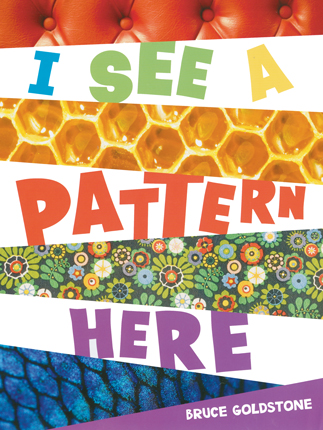Full Text Reviews: School Library Journal - 12/01/2014 Gr 2–4—This attractive picture book is a colorful addition for general collections but can be used to expand a math or social studies library. Relying on a conversational tone and using relatable examples from a wide variety of cultures, the author draws in readers easily as he discusses concepts related to patterns while also tying in social studies, nature, and math vocabulary. Strategically placed questions ("What flips can you find in these patterns?") will engage kids further (an answer key is included at the end). Children are introduced to a wide variety of concepts: math-related ones, such as symmetry and reflection, as well as those that are tied to specific cultures—African mud cloths or the Pantheon's dome in Rome. Bold, striking photographs of everyday objects, such as tiles, mosaics, bee hives, animals, cars, cathedrals, and seashells are used to support the text. Informational text boxes titled "MathSpeak" provide greater detail throughout on topics such as symmetry and scaling. An excellent overview.—Tracey Wong, P.S. 54/Fordham Bedford Academy, Bronx, NY - Copyright 2014 Publishers Weekly, Library Journal and/or School Library Journal used with permission. Booklist - 02/01/2015 This colorful book challenges readers to recognize patterns and to notice how they differ from one another. Using examples that include everyday objects, animals, and architectural elements, the text points out and briefly explains elements of patternmaking, such as translation, rotation, reflection, symmetry, scaling, and tessellation. Helpful photos illustrate patterns seen in the natural world and a variety of world cultures, from the hexagonal cells in a bee’s hive to a mud cloth made in Mali to an ancient Greek tile mosaic. As in his previous math-themed books, including Great Estimations (2006), 100 Ways to Celebrate 100 Days (2010), and That’s a Possibility! (2013), Goldstone shot many of the clearly reproduced color photographs that illustrate the concepts. Simplicity, order, and variety in layout give the book an inviting look. The final pages challenge readers to create their own patterns using plastic, interlocking blocks, hand-printed stamps on paper, or paper cutouts. A useful, attractive introduction to patterns. - Copyright 2015 Booklist. Bulletin for the Center... - 05/01/2015 This attractively photoillustrated title introduces primary-graders to the way design elements are manipulated to create various kinds of patterns and to the correct mathematical terminology for these transformations. Goldstone quickly draws his audience into the subject with a double-page spread of eight strands of beads, with a dangling thread and a selection of possible beads clustered on the end, and the invitation to determine “which bead keeps the pattern going.” Subsequent spreads demonstrate transformations and concepts: translation, rotation, 180-degree turn, reflection, symmetry, scaling, and tessellation, as well as the effects of stretching and squashing elements, and fiddling with color. Goldstone wraps it up with another pair of activities-identifying transformations in an intricate mosaic and using Lego-style blocks, stamps, and paper-cutting to create original patterns. With crisply reproduced pictures of animals, household objects, architecture, and global arts and crafts (many captioned) that are as beautiful as they are effective, this successful math lesson doubles as an aesthetic pleasure. EB - Copyright 2015 The Board of Trustees of the University of Illinois. Loading...
|



